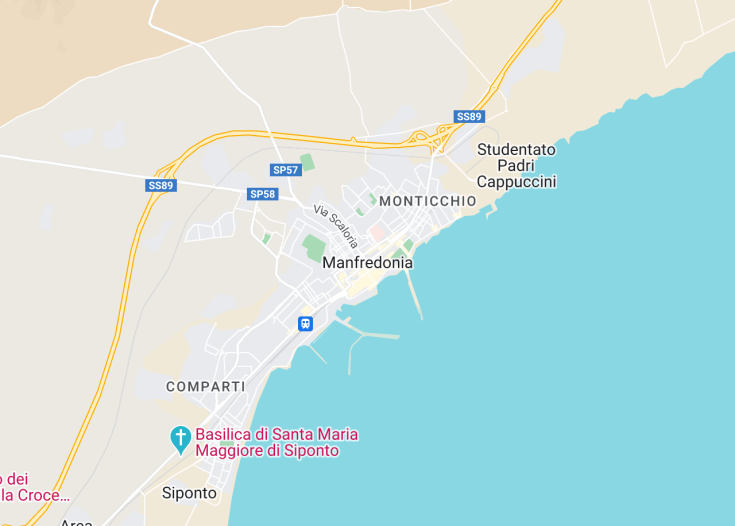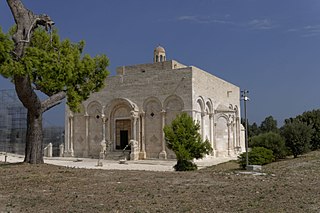Manfredonia, nestled on Italy’s Adriatic coast in the Puglia region, offers a captivating blend of historical heritage and natural beauty. This picturesque city, established by King Manfred in 1256, showcases a rich history evident in its medieval architecture, like the imposing Castello di Manfredonia. Visitors can enjoy stunning seaside views, explore ancient ruins, and experience the vibrant local culture and gastronomy. The city also serves as a gateway to the Gargano National Park, making it a perfect spot for both relaxation and adventure.
Before traveling to Manfredonia, check the local calendar for festivals and events, particularly during summer, as these can enhance your cultural experience.
For an enriching visit, consider a guided tour of the historical sites and surrounding natural areas to fully appreciate Manfredonia’s heritage and landscapes.
Top things to do & see in Manfredonia
Select the following sights and activities to discover best tickets and tours available in Manfredonia.
Manfredonia: Gateway to the Gargano
| Country | Italy |
| Time in Manfredonia | GMT+1 |
| Language spoken | Italian |
| Population | 56,932 (as per the latest UN data) |
| Currency | Euro (€, EUR) |
| Airports |
|
Located in the Italian region of Apulia, Manfredonia is a charming coastal town resting on the shores of the Adriatic Sea. This historic town is part of the larger Foggia province and serves as a serene gateway to the enchanting Gargano National Park. The town’s history spans several centuries, initiated in 1256 by Manfred, son of the Holy Roman Emperor Frederick II. Initially built as a fortified city to protect inland territories from maritime invaders, Manfredonia has evolved but retains a rich, cultural heritage evident in its architecture and annual festivals. Noteworthy sites include the imposing Castello di Manfredonia, built during the 13th century, now housing the National Museum of Gargano. Manfredonia’s geographical setting places it as a pivotal seaside town. It boasts vast sandy beaches and a vibrant marina, making it a favorite destination for both local and international tourists seeking relaxation and nature. The town’s economy thrives on agriculture, fishing, and increasing tourism, leveraging its historical and natural resources. The local cuisine reflects Manfredonia’s connection to both land and sea. Visitors can savor traditional dishes such as “orecchiette” with turnip tops and a variety of seafood inspired by rich Mediterranean flavors. Each year, the town hosts the Carnival of Manfredonia, one of Puglia’s major events, celebrating with parades, music, and traditional mask displays. Preservation of culture and a commitment to sustainable tourism make Manfredonia a unique locale that honors its past while looking to the future. Enhancements in local infrastructure and tourism services aim to balance visitor needs with environmental preservation, particularly within the Gargano area. Manfredonia’s position as a hub for exploring the broader Gargano region allows for numerous outdoor activities such as hiking, cycling, and boating, thriving under the Mediterranean sun.
Where is Manfredonia?
Manfredonia is strategically located along the northern coastline of the Gargano peninsula in Italy, providing direct access to the Adriatic Sea.
Distances:
| Route | Distance by car | Time by car |
|---|---|---|
| Rome to Manfredonia | 253 miles | 4 hours 30 min |
| Naples to Manfredonia | 165 miles | 2 hours 45 min |
What is Manfredonia famous for?
Manfredonia is renowned for its beautiful coastlines, historic sites like the medieval castle, and as the festive ground of the lively and colorful Carnival of Manfredonia, attracting tourists with its unique cultural displays.
History
Pre-Roman and Roman Period (before 1st century AD)
Manfredonia’s roots trace back to the ancient city of Sipontum, inhabited by the Daunians, an Illyrian tribe, and later colonized by the Romans. Sipontum thrived under Roman rule, benefitting from its strategic coastal location that facilitated trade and military logistics.
Medieval Period (11th to 13th century)
After the fall of the Roman Empire, the area witnessed a period of decline and was frequently raided by pirates. In the 11th century, Manfredonia was rebuilt and fortified by the Normans who conquered southern Italy. The city’s name derives from Manfred, son of the Emperor Frederick II, who founded the modern city in the 13th century to replace Sipontum after it was destroyed by a tsunami in 1223.
Renaissance to Modern Age (14th to 19th century)
Manfredonia experienced a Renaissance bloom, with the construction of elaborate churches and palaces. However, the city faced challenges like plagues, earthquakes, and foreign invasions which impacted its development. It was part of the Kingdom of Naples and was involved in various power struggles between Spanish, French, and Austrian rulers.
20th Century to Present
The modern era saw Manfredonia striving to overcome economic challenges through the development of tourism, agriculture, and fishing. The city also became known for its conservation efforts in preserving its rich history and cultural heritage, making it not only a center of commerce but a compelling historical site as well.
Visit Manfredonia
What to see and do in Manfredonia
Manfredonia, steeped in rich history and surrounded by stunning natural beauty, offers a multitude of attractions. Explore the Castle of Manfredonia, initially erected by King Manfred in the 13th century, now hosting a museum that recounts the city’s history. The stunning Basilica of Santa Maria Maggiore di Siponto, just outside the city, is an architectural marvel that combines ancient and modern design elements. For nature enthusiasts, the nearby Gargano National Park provides breathtaking landscapes and a rich array of biodiversity. Don’t miss strolling along the beautiful marina and enjoying fresh seafood at local restaurants:
- Castle of Manfredonia
- Basilica of Santa Maria Maggiore di Siponto
- Gargano National Park
- Local seafood at Manfredonia’s marina
Festivals and Events in Manfredonia
Manfredonia is vibrant with cultural celebrations throughout the year. Key events include the festive Carnevale di Manfredonia, one of Italy’s most colorful carnivals, held in February. The summer months are lively with the “Sagra del Mare,” celebrating local seafood, while September brings the historical reenactment, “La Disfida di Manfredonia,” reviving the town’s medieval past.
Best time to visit Manfredonia
The ideal time to visit Manfredonia is between late spring and early autumn, specifically from May to October, when the weather is most pleasant for exploring the city’s rich historical sites and enjoying outdoor activities at Gargano National Park.
Is Manfredonia worth visiting?
Manfredonia is undoubtedly worth visiting, offering a rich tapestry of historical, natural, and cultural attractions. Visitors can delve into the city’s deep historical roots, marvel at its architectural beauty, and enjoy the natural splendors of its surroundings. The city’s vibrant events and delectable local cuisine further enrich the travel experience, making Manfredonia a comprehensive and rewarding destination.










